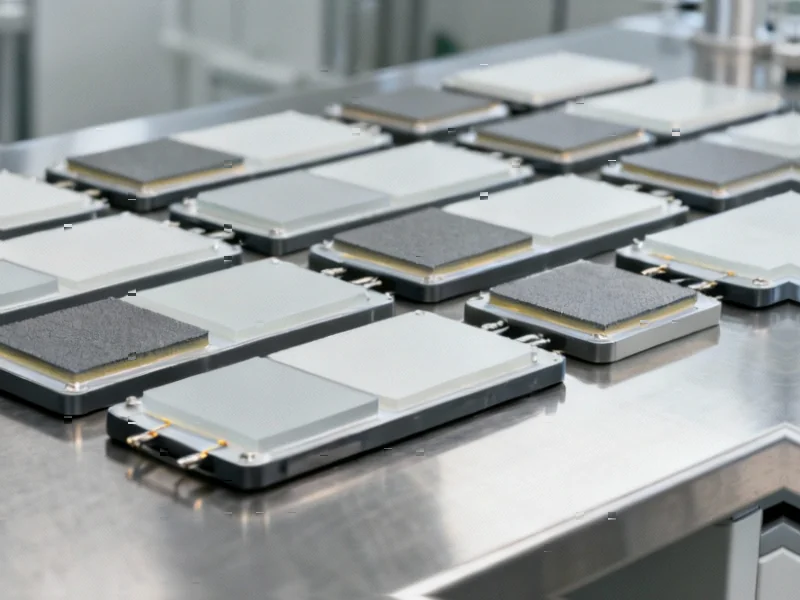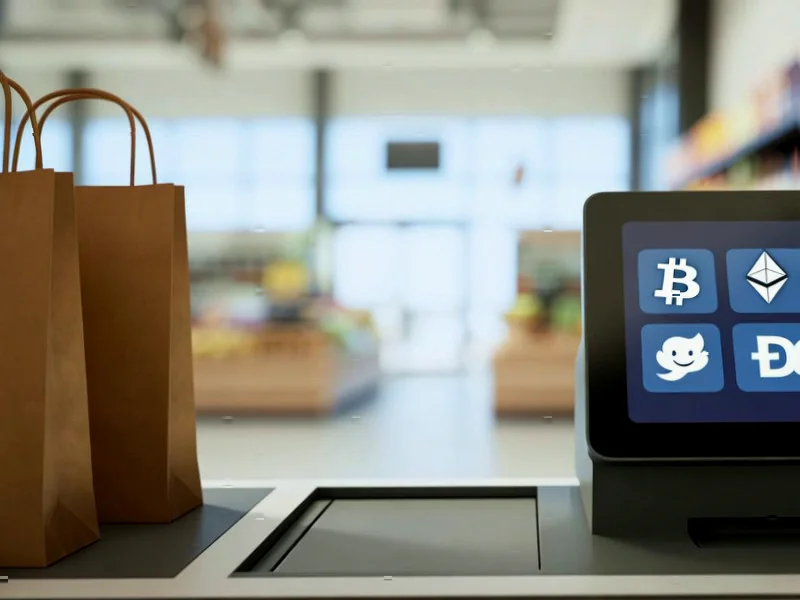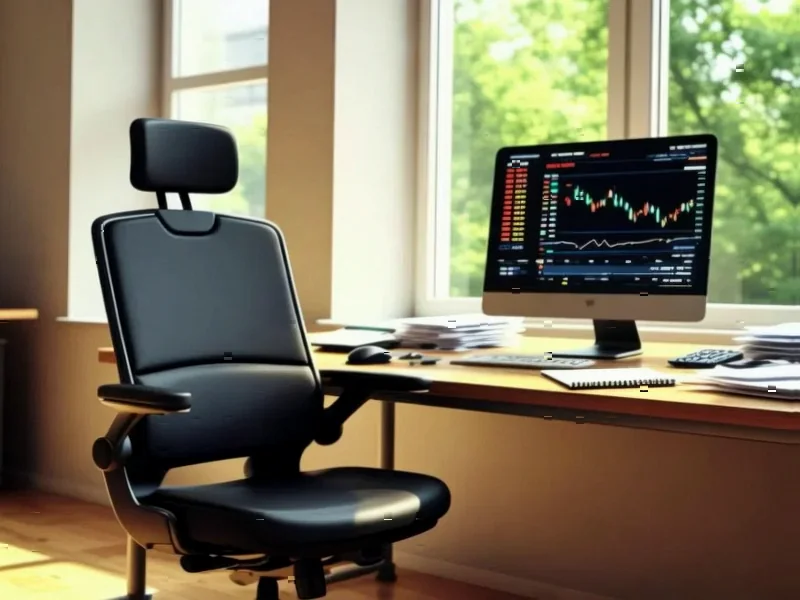According to Innovation News Network, the SOLiD project represents Europe’s ambitious push to scale solid-state battery manufacturing beyond laboratory prototypes. Launched in September 2022 with 14 partners across nine countries, the EU-funded initiative has achieved significant breakthroughs in dry electrode coating, polymer electrolyte formulation, and digital quality control systems. The project’s polyester-based PESDA electrolyte formulation demonstrates remarkable performance, retaining 95% capacity after 120 cycles while enabling tensile yields up to 250% before failure. By pioneering roll-to-roll dry extrusion coating and pulsed laser deposition for ultra-thin lithium layers, SOLiD aims to create a sustainable pilot-scale process that could redefine European battery production. These developments come at a critical moment as the project enters its final phase with operational digital inspection systems expected by late 2025.
Table of Contents
- The Manufacturing Revolution Beyond Materials Science
- The Digital Twin Advantage in Quality Control
- The Recycling Imperative and Design Limitations
- Global Context and Competitive Realities
- The Rocky Road to Commercialization
- Broader Implications for European Industry
- Related Articles You May Find Interesting
The Manufacturing Revolution Beyond Materials Science
While much attention focuses on battery chemistry breakthroughs, SOLiD’s most significant contribution may be its reimagining of manufacturing processes. Traditional battery production relies heavily on wet processes using toxic solvents like N-methyl-2-pyrrolidone (NMP), which require extensive ventilation, solvent recovery systems, and energy-intensive drying ovens. The shift to dry extrusion coating represents more than just environmental improvement—it fundamentally changes the economics of battery manufacturing. By eliminating solvent handling and recovery infrastructure, factories can reduce capital expenditure by 15-25% while cutting energy consumption during production by up to 40%. This manufacturing innovation could prove more impactful than the solid-state chemistry itself, as it addresses the core cost barriers that have prevented wider adoption of advanced battery technologies.
The Digital Twin Advantage in Quality Control
SOLiD’s integration of AI-driven digital twins represents a paradigm shift in battery manufacturing quality assurance. Traditional quality control in battery production relies on statistical sampling and post-production testing, meaning defective cells are often identified only after significant resources have been invested. The digital twin approach enables real-time process optimization by creating a virtual replica of the production line that learns from every manufactured cell. This technology could reduce scrap rates from the current industry average of 5-10% down to 1-2%, dramatically improving both economics and sustainability. More importantly, as battery energy density increases, the consequences of manufacturing defects become more severe—making this level of quality control not just economically beneficial but essential for safety.
The Recycling Imperative and Design Limitations
SOLiD’s focus on recycling-by-design addresses one of the most pressing challenges in the battery industry, but significant hurdles remain. While polymeric interlayers for easy delamination represent a step forward, the reality of battery recycling involves complex material interactions that laboratory conditions may not fully capture. The project’s use of lithium metal anodes, while promising for energy density, introduces new recycling challenges. Lithium metal is highly reactive and requires specialized handling at end-of-life, potentially offsetting some environmental benefits. Furthermore, the economics of recycling depend heavily on scale and material values—factors that remain uncertain for emerging solid-state chemistries. The success of these recycling initiatives will depend not just on technical feasibility but on developing viable business models that can operate at commercial scale.
Global Context and Competitive Realities
Europe’s push for battery sovereignty through projects like SOLiD comes amid intense global competition. Asian manufacturers, particularly in China, South Korea, and Japan, have invested billions in solid-state research while maintaining dominant positions in conventional lithium-ion production. Companies like Toyota and QuantumScape have announced their own solid-state breakthroughs, with several aiming for commercial production around the 2027-2028 timeframe. SOLiD’s challenge isn’t just technical—it’s about creating an entire ecosystem that can compete with established Asian supply chains. The project’s consortium model, combining research institutions with SMEs and industrial partners, reflects Europe’s distributed innovation approach, but this fragmentation could also slow commercialization compared to vertically integrated Asian competitors.
The Rocky Road to Commercialization
Transitioning from successful pilot production to commercial-scale manufacturing represents SOLiD’s greatest challenge. History is littered with battery technologies that showed promise in the lab but failed at scale due to issues with material consistency, manufacturing yield, and long-term reliability. The project’s focus on 1 Ah and 10 Ah reference cells is a positive step, but commercial electric vehicle batteries typically range from 50-100 Ah, requiring different engineering considerations. Scaling pulsed laser deposition for solid-state anode production presents particular challenges, as the technique has historically been used for research-scale deposition rather than high-volume manufacturing. Success will require not just technical excellence but careful consideration of production economics, supply chain development, and market timing.
Broader Implications for European Industry
Beyond batteries themselves, SOLiD represents a test case for Europe’s broader industrial strategy in clean technology. The continent’s approach—combining public funding with cross-border collaboration—contrasts with the more centralized models seen in Asia and the venture capital-driven approach in North America. If successful, the manufacturing innovations developed through SOLiD could be applied to other advanced materials production, creating spillover benefits across multiple industries. However, this success depends on creating sustainable business models that can survive without ongoing public support. The project’s ultimate impact may be measured not just in battery performance metrics but in whether it spawns commercially viable companies that can compete globally while maintaining European values of sustainability and circular economy principles.
Related Articles You May Find Interesting
- LanzaJet’s Political Pivot Tests Sustainable Aviation Fuel Future
- Tesla’s Autopilot Security Revealed in Court Documents
- Shawbrook’s London IPO Success Signals Market Revival Hope
- Europe’s AI Renaissance: How Three Specialized Startups Are Outpacing Silicon Valley
- Stellantis Faces $13B Bet Amid Restructuring Storm



